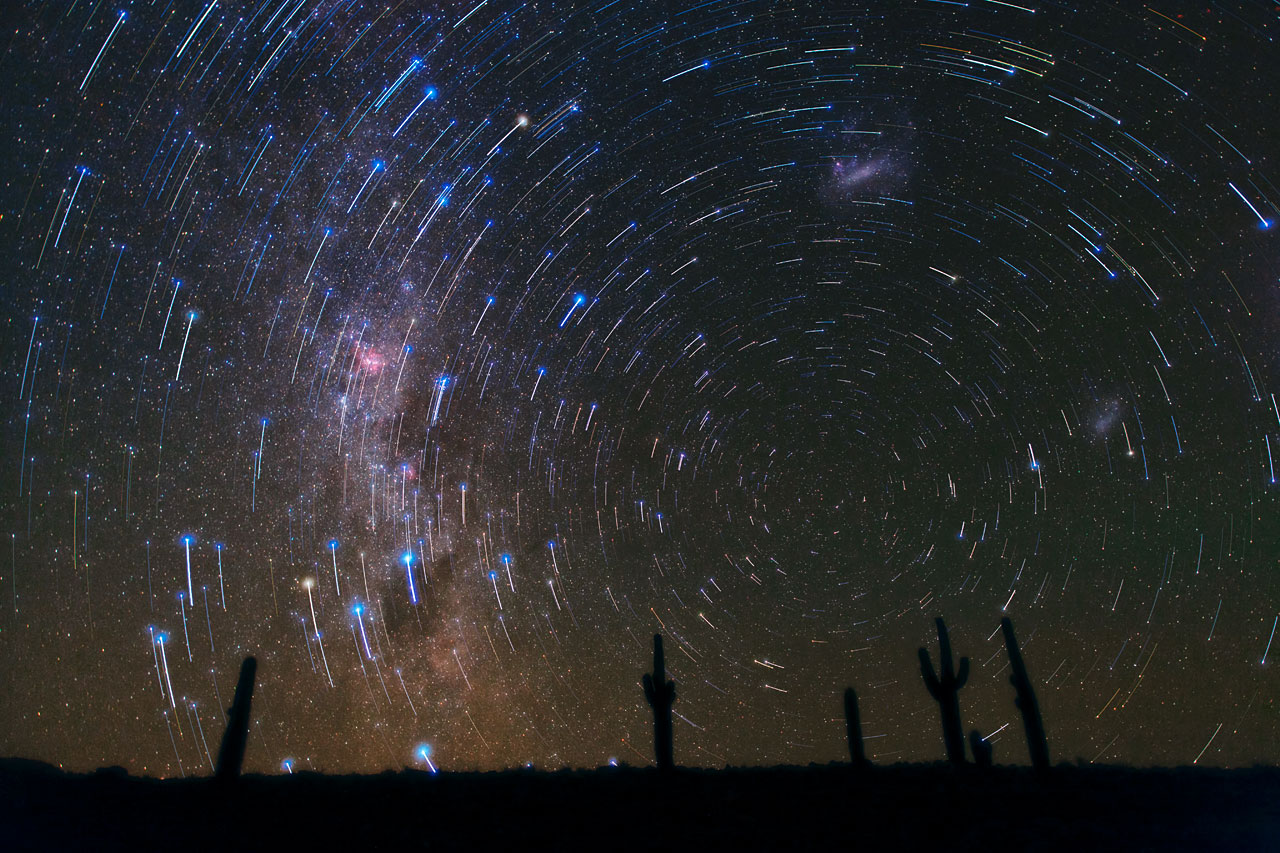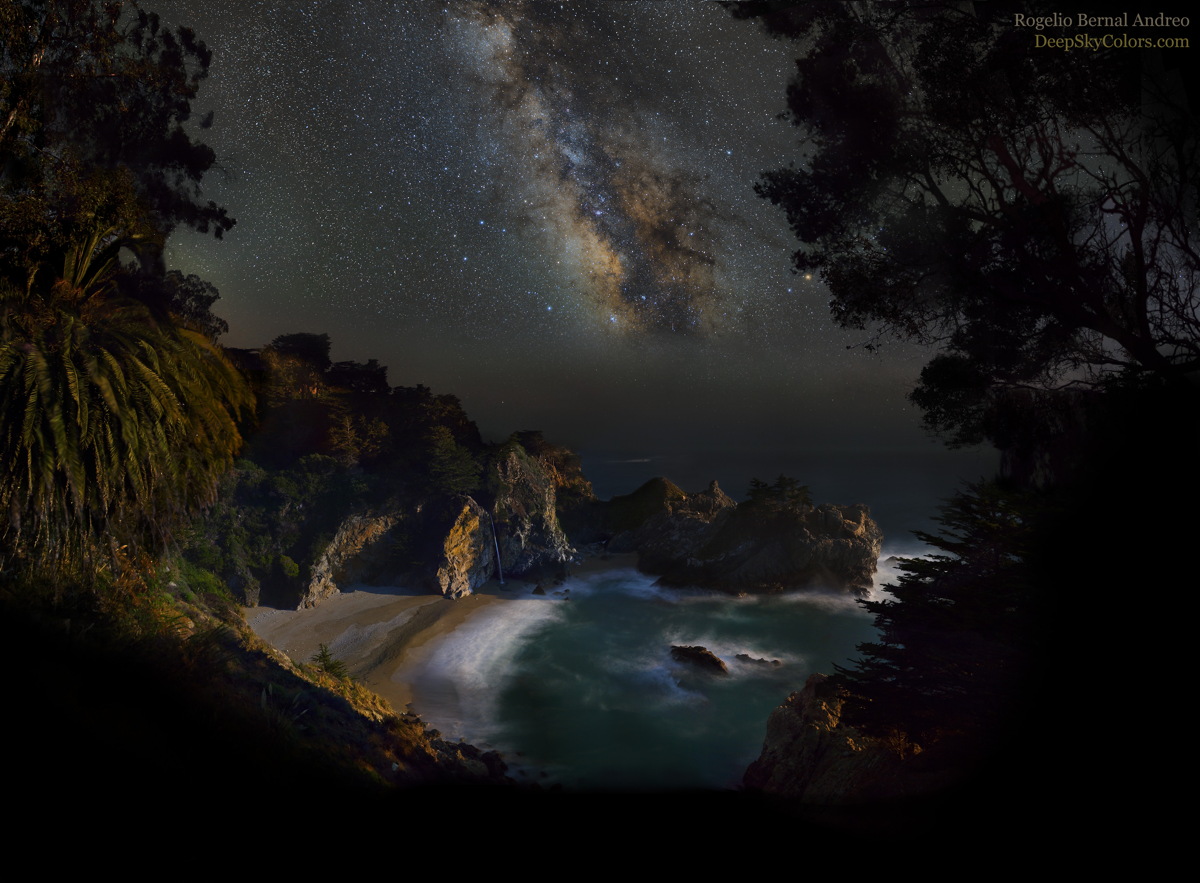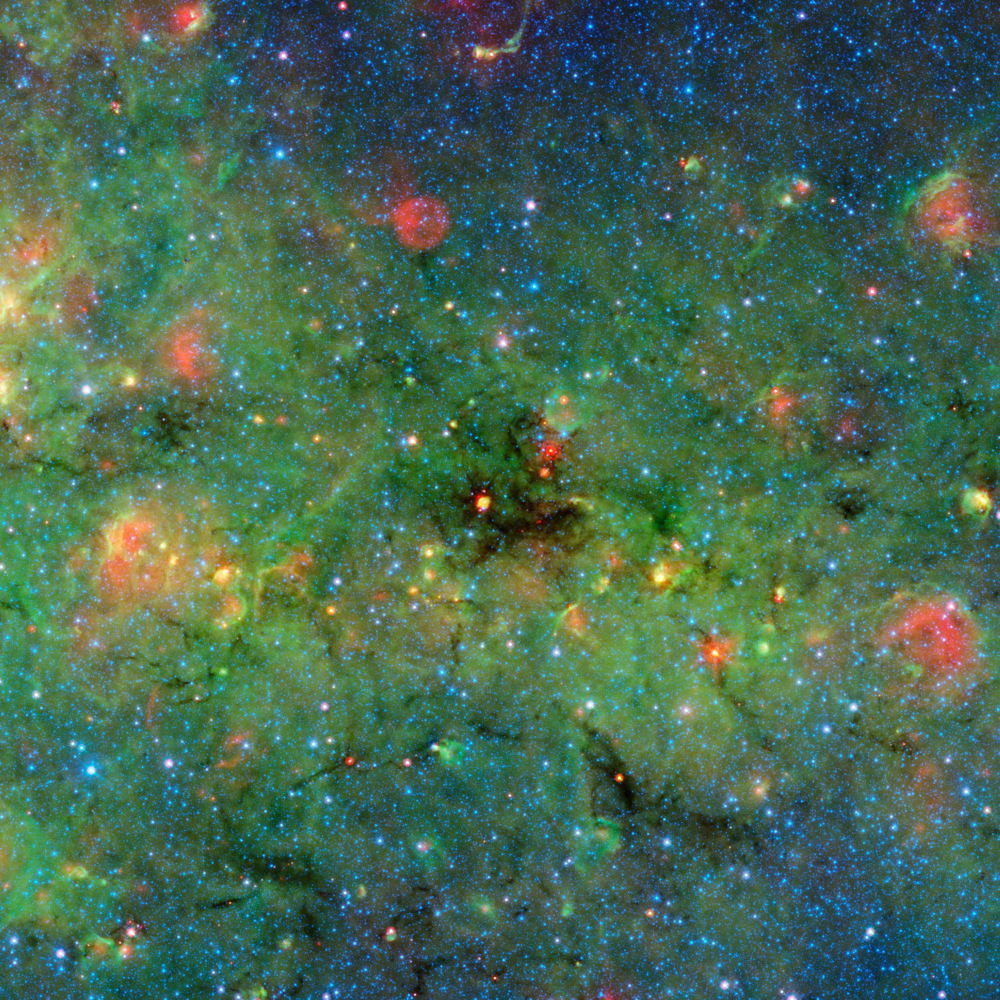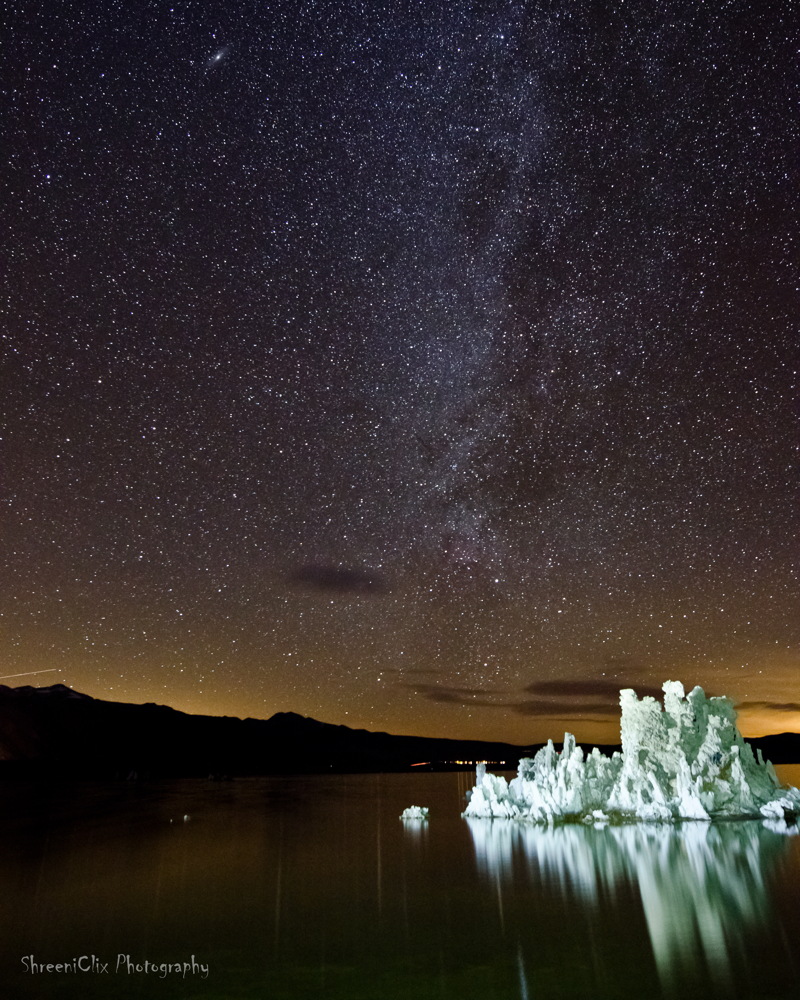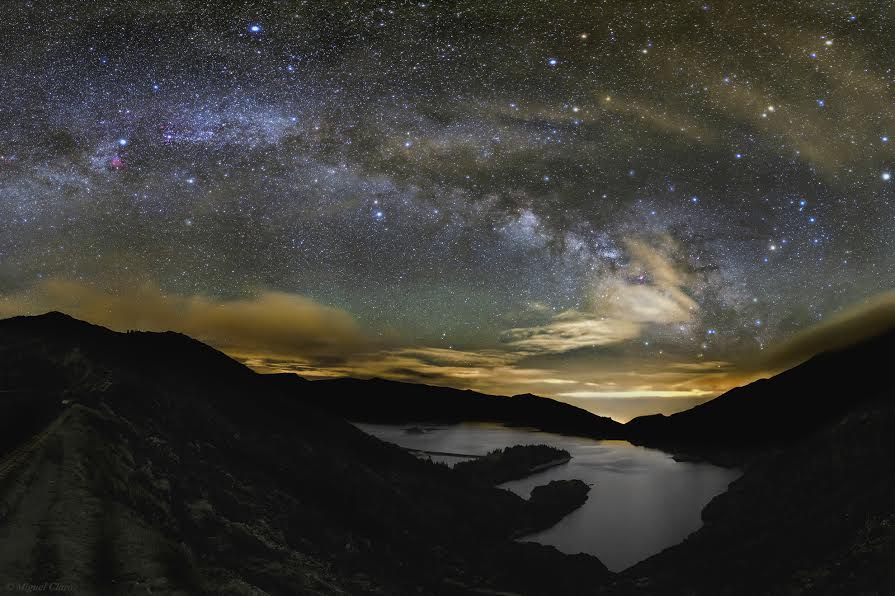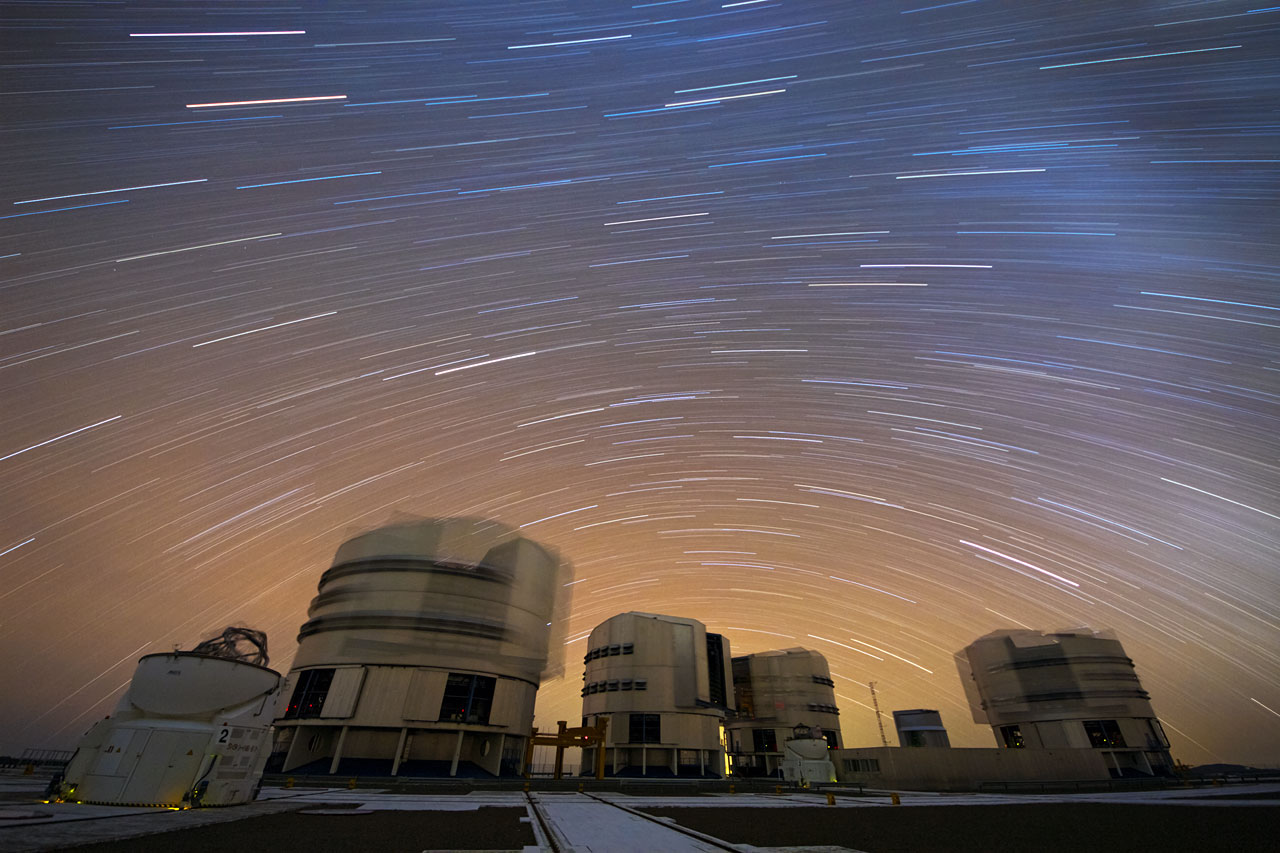Space Image of the Day Gallery (May 2014)
Goin’ Round and Round and Round and Round and Round
Thursday, May 15, 2014: Stars trail over cacti in the Atacama Desert of Chile. Long-exposure shots capture the stars as the Earth rotates, making the starry lights appear to circle around the South Celestial Pole. The photographer superimposed a final deeper exposure over the trails, revealing many fainter stars. Also the southern Milky Way rises just above the horizon, with patches of dark dust and the well-known pinkish glow of the Carina Nebula. Towards the right, the satellite galaxies of the Milky Way, the Large Magellanic Cloud (top center) and Small Magellanic Cloud (bottom right), also shine.
— Tom Chao
Bursting Out
Friday, May 16, 2014: An active region on the sun ejected at least half a dozen bursts of plasma. Several clouds of the plasma spread across parts of the solar surface over two days (Apr. 19-21, 2014). Here the active region is seen as the bright white areas at left of center on the sun. These coronal mass ejections (CMEs) headed out into space as well. This still from a movie taken by the ultraviolet imager on the STEREO (Ahead) spacecraft shows the CMEs spread out like a curtain above the surface of the sun. Since STEREO’s current position observes the far side of the sun, these bursts do not head towards Earth.
— Tom Chao
Wanting to Drill Fully
Monday, May 19, 2014: NASA's Curiosity Mars Rover examined and even drilled into the rock target "Windjana" and its immediate surroundings after inspection of the site by the rover. The drilling of a test hole and a sample collection hole produced the mounds of drill cuttings that appear less reddish in color than the other visible surfaces. This represents material that the drill pulled up from the interior of the rock. This view came from the 627th Martian day, or sol, of Curiosity's work on Mars (May 12, 2014). The open hole from sample collection measures 0.63 inch (1.6 centimeters) in diameter. Curiosity drilled it on Sol 621 (May 5, 2014).
— Tom Chao
Big Eyes
Tuesday, May 20, 2014: At ESO’s Paranal Observatory in Chile, a small crowd gathers by the telescopes, not at the end of the work day, as the sunset might suggest, but rather before the night’s activities commence. The domes to the left house the four 1.8-meter-diameter Auxiliary Telescopes that make up part of the Very Large Telescope array (VLT). At the far left stands the VLT Unit Telescope, looming over the Auxiliary Telescopes. The VLT has four 8.2-meter telescopes like this, some of the largest telescopes on the planet. Bigger still, the forthcoming European Extremely Large Telescope (E-ELT) will feature a mirror spanning an incredible128 feet (39 meters) in diameter. The European Southern Observatory plans for E-ELT to see first light in the early 2020s.
— Tom Chao
Two Worlds Collide
Wednesday, May 21, 2014: Adam Block of the Mount Lemmon SkyCenter produced an image of this bizarre-looking item in April 2014. Arp 184, as it is classified in the Atlas of Peculiar Galaxies, also goes by the name of Mayall’s Object. The strange entity lies 500 million light years away within the constellation of Ursa Major. The unusual shape of Arp 148 may have resulted from the collision of two galaxies, which created the new object consisting of a ring-shaped galaxy with a tail.
— Tom Chao
McWay or the Milky Way
Thursday, May 22, 2014: Astrophotographer Rogelio Bernal Andreo sent in a photo of the Milky Way over McWay Falls, Big Sur, California. He indicates in an email message to Space.com that: “It's a composite that includes a dozen of images shot at 140mm and a "tracked" sky at 70mm." The falls appear as a narrow stream of water falling onto the beach just slightly left and below the center of the image. Andreo captured the image during the weekend of May 10-11, 2014.
— Tom Chao
In the Velvet Darkness
Friday, May 23, 2014: Astronomers have found dark, dense and dusty cosmic clumps that throw the deepest shadows ever recorded. The clumps lie within a huge cosmic cloud of gas and dust (center). NASA's Spitzer Space Telescope has made infrared observations of these regions in the cloud that provide a way to understand how the brightest stars form. The large cloud sits in the center of the galactic plane. A new study takes advantage of the shadows cast by the dark clumps to measure the cloud's overall structure and mass. The dense, clumpy pockets of star-forming material within the cloud consist of such thick dust that they scatter and block not only visible light, but almost all background infrared light as well. The study's results suggest that the dusty cloud will likely evolve into one of the most massive young clusters of stars in our galaxy.
— Tom Chao
Breaking space news, the latest updates on rocket launches, skywatching events and more!
We’ve Come Tufa
Tuesday, May 27, 2014: Astrophotographer Shreenivasan Manievannan sent in a photo of the Milky Way and Andromeda over Mono Lake, California. Manievannan writes in an email message to Space.com: “It is a single exposure photograph of the Mono Lake south tufas [limestone columns precipitating out of the water] in the night in front of Milky Way and Andromeda in the [upper] left extreme of the photo. The tufas were light painted to be visible with the reflections seen in the shallow waters.” Image submitted May 15, 2014.
— Tom Chao
'Sky of Milk in a Lake of Fire' by Claro
Wednesday, May 28, 2014: Astrophotographer Miguel Claro sent in a photo of the Milky Way above Lagoa do Fogo, the "Lake of Fire," on the island of São Miguel in the Azores, located in the North Atlantic Ocean. The Azores represent one of the two autonomous regions of Portugal. Light from Vila Franca do Campo, a small town at the southern shore of the island, illuminates the clouds near the horizon. Above, in the sky, from left to right shines Cygnus (The Swan) constellation, the North America nebula (NGC 7000) below the star Deneb. Down and to the right of it lies Aquila constellation. Constellation Scorpius and star Antares glows near the right edge, while Saturn, in Libra, is all the way at the right side.
— Tom Chao
Spin, Spin
Thursday, May 29, 2014: Stars appear to trail over the Paranal Observatory in northern Chile. Astrophotographer Gianluca Lombardi combined many long-exposure images to create the photograph of the Very Large Telescope (VLT) and its Auxiliary Telescopes appearing blurred as they moved to different positions. Overhead, the stars seem to arc through the sky as the Earth rotates beneath. The VLT represents the European Southern Observatory's flagship facility.
— Tom Chao
